
How to Use SGP41 VOC and NOx Sensor: Examples, Pinouts, and Specs
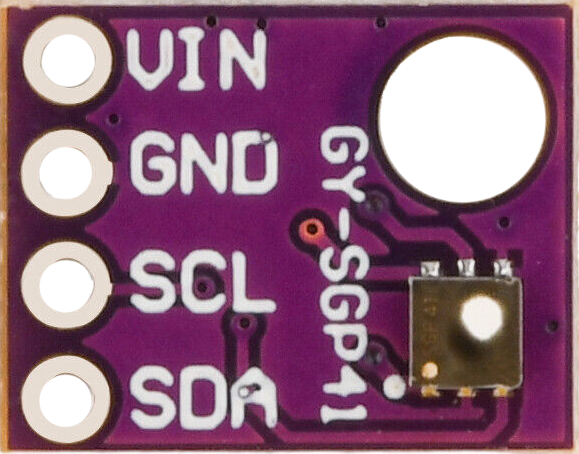
 Design with SGP41 VOC and NOx Sensor in Cirkit Designer
Design with SGP41 VOC and NOx Sensor in Cirkit DesignerIntroduction
The SGP41 is an advanced sensor designed by Sensirion for air quality monitoring. It is capable of detecting volatile organic compounds (VOCs) and nitrogen oxides (NOx), which are indicators of pollution and can affect indoor air quality. The sensor is widely used in smart home devices, air purifiers, and HVAC systems to monitor and control air quality.
Explore Projects Built with SGP41 VOC and NOx Sensor
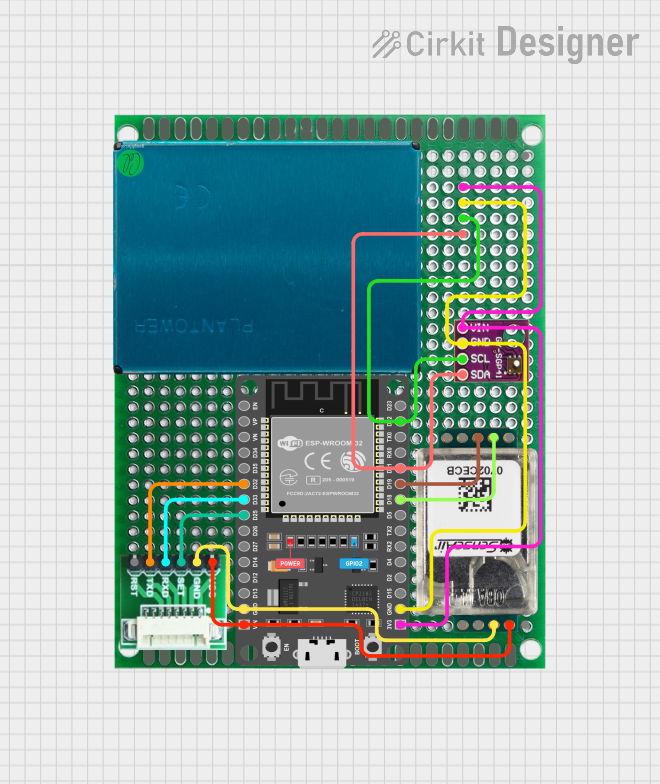
 Open Project in Cirkit Designer
Open Project in Cirkit Designer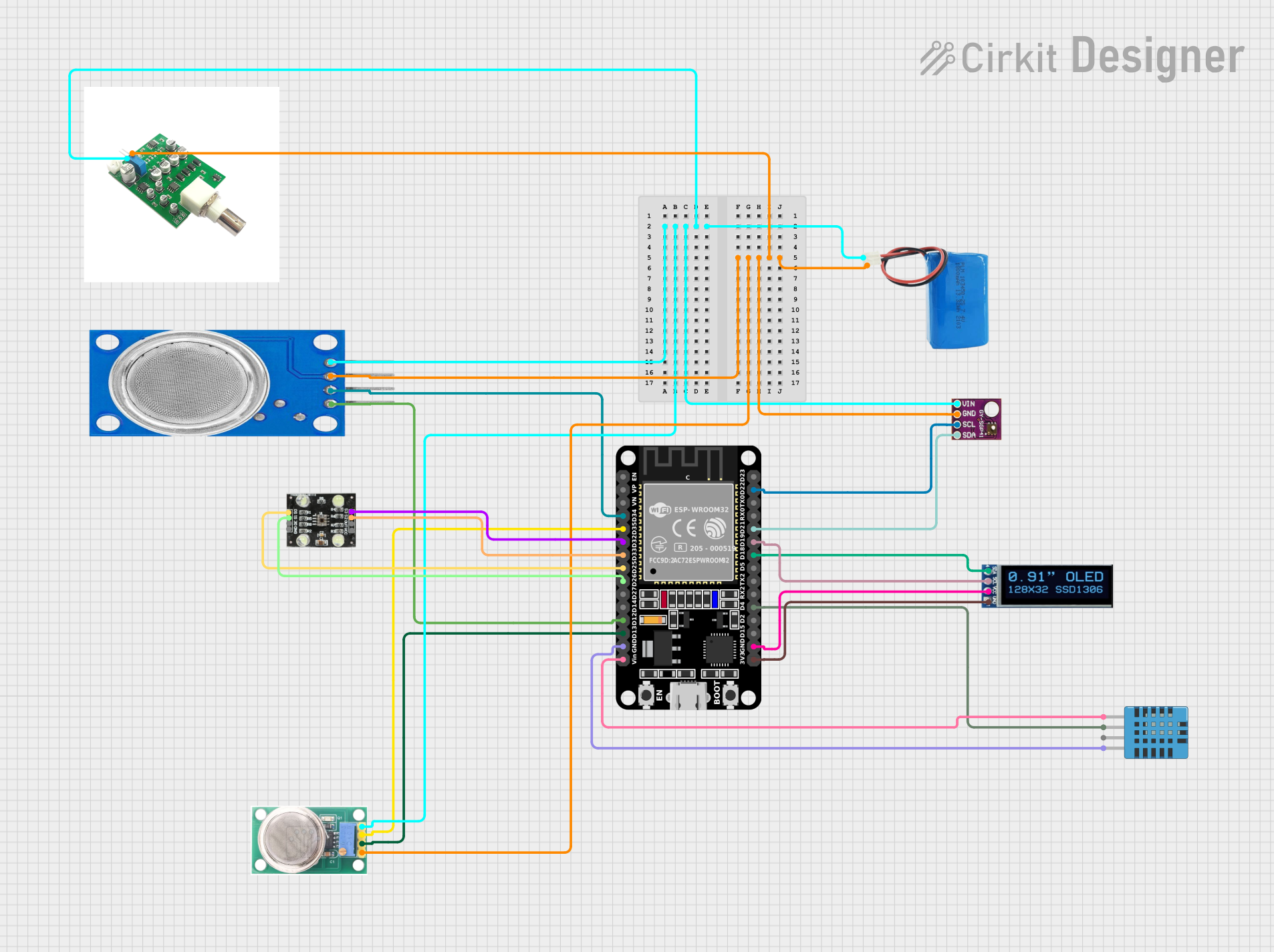
 Open Project in Cirkit Designer
Open Project in Cirkit Designer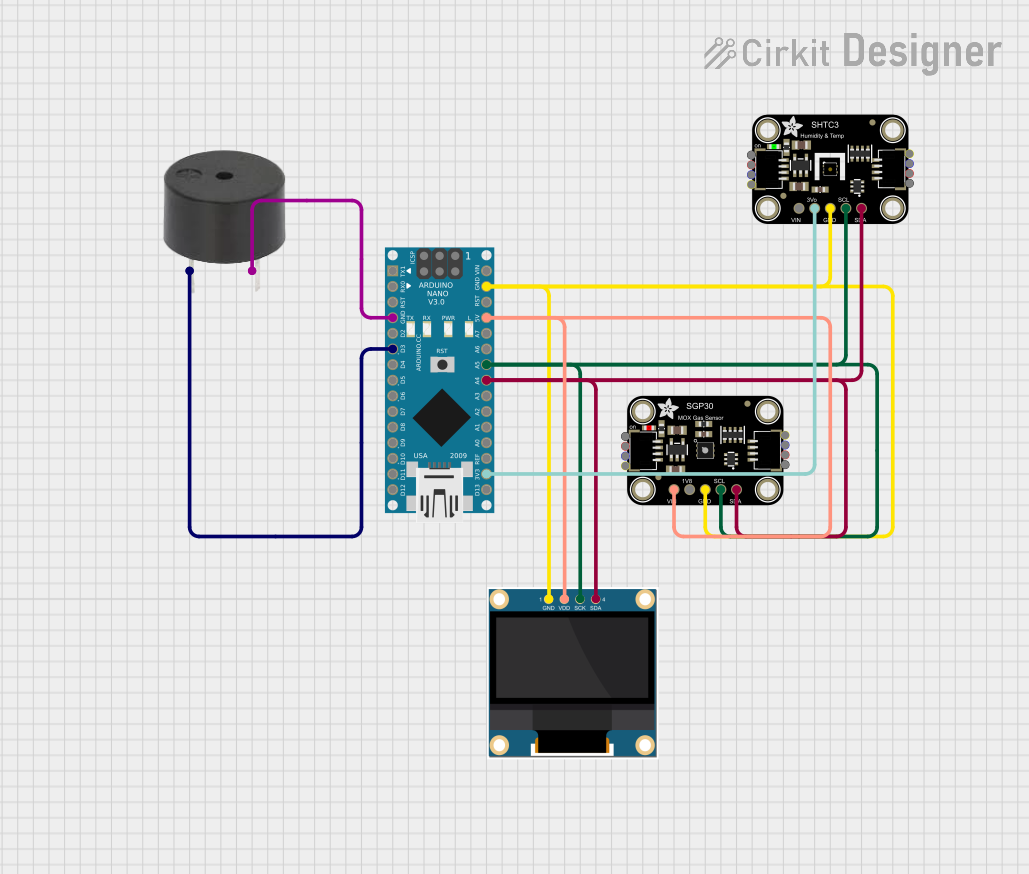
 Open Project in Cirkit Designer
Open Project in Cirkit Designer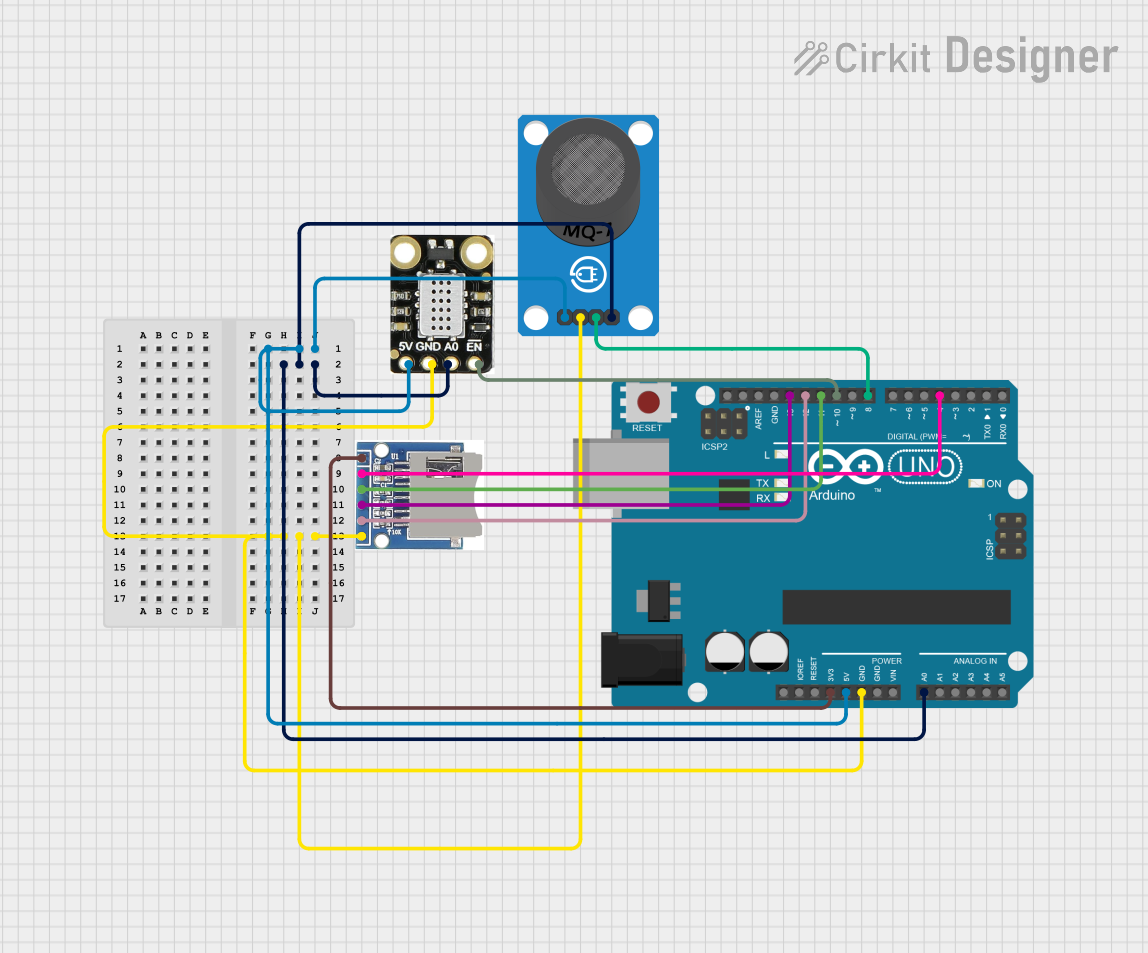
 Open Project in Cirkit Designer
Open Project in Cirkit DesignerExplore Projects Built with SGP41 VOC and NOx Sensor

 Open Project in Cirkit Designer
Open Project in Cirkit Designer
 Open Project in Cirkit Designer
Open Project in Cirkit Designer
 Open Project in Cirkit Designer
Open Project in Cirkit Designer
 Open Project in Cirkit Designer
Open Project in Cirkit DesignerTechnical Specifications
Key Technical Details
- Measurement gases: VOC and NOx
- Interface: I2C
- Supply voltage (Vdd): 1.7 V to 3.6 V
- Heater voltage (VH): 5.5 V to 10 V
- Average current consumption: 15 mA (typical)
- Peak current consumption: 145 mA (max)
- Operating temperature range: -10°C to 50°C
- Humidity range: 0% to 95% RH, non-condensing
Pin Configuration and Descriptions
| Pin Number | Name | Description |
|---|---|---|
| 1 | VDD | Supply voltage for the sensor's logic |
| 2 | GND | Ground reference for power and logic |
| 3 | SDA | I2C data line |
| 4 | SCL | I2C clock line |
| 5 | SEL | Interface select (pull to GND for I2C) |
| 6 | NC | No connection (reserved for future use) |
Usage Instructions
Integration into a Circuit
To use the SGP41 sensor in a circuit:
- Connect the VDD pin to a power supply between 1.7 V and 3.6 V.
- Connect the GND pin to the ground of your power supply.
- Connect the SDA and SCL pins to your microcontroller's I2C data and clock lines, respectively.
- The SEL pin should be connected to GND to select the I2C interface.
Best Practices
- Ensure that the power supply is stable and within the specified voltage range.
- Use pull-up resistors on the I2C lines as required by your microcontroller's specifications.
- Avoid placing the sensor in direct contact with solvents or corrosive gases.
- Allow the sensor to preheat for the manufacturer's recommended time before taking measurements.
Example Code for Arduino UNO
#include <Wire.h>
// SGP41 I2C address is 0x59 (89)
#define SGP41_I2C_ADDRESS 0x59
void setup() {
Wire.begin(); // Initialize I2C
Serial.begin(9600); // Start serial communication at 9600 baud
}
void loop() {
// Send measurement command to SGP41
Wire.beginTransmission(SGP41_I2C_ADDRESS);
Wire.write(0x20);
Wire.write(0x32); // Command for continuous VOC and NOx measurement
Wire.endTransmission();
// Wait for the sensor to process the measurement
delay(100);
// Request 3 bytes from the sensor
Wire.requestFrom(SGP41_I2C_ADDRESS, 3);
if (Wire.available() == 3) {
// Read the measurement data
uint16_t vocIndex = Wire.read() << 8;
vocIndex |= Wire.read();
uint8_t checksum = Wire.read();
// Print the VOC Index
Serial.print("VOC Index: ");
Serial.println(vocIndex);
}
// Delay between measurements
delay(1000);
}
Troubleshooting and FAQs
Common Issues
- Sensor not responding: Ensure that the wiring is correct, and the power supply is within the specified range.
- Inaccurate readings: Verify that the sensor has been preheated and that it is not exposed to direct pollutants or solvents.
- I2C communication errors: Check the pull-up resistors on the SDA and SCL lines and ensure there are no shorts or open circuits.
FAQs
Q: How long does the sensor need to preheat before use? A: Refer to the manufacturer's datasheet for the exact preheat time, typically a few minutes.
Q: Can the SGP41 sensor be used outdoors? A: The sensor is designed for indoor use and may not perform accurately if exposed to outdoor conditions.
Q: Is calibration required for the SGP41 sensor? A: The sensor comes pre-calibrated from the factory, but periodic recalibration may be necessary depending on the application.
For further assistance, consult the manufacturer's datasheet and application notes.